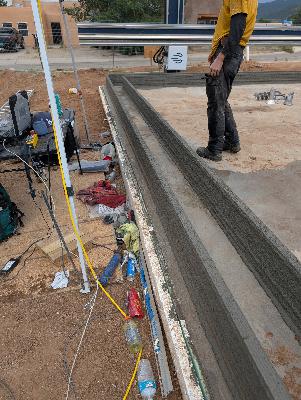Pangea Podcast Episode 4: The Role of the WOM in Sustainable Water Management
Description
Ever stop to think how much water you use every day? The average American household, they use a crazy amount, like, 80 to a 100 gallons. And, you know, the funny thing is, most of that isn’t even for drinking. Really puts things in perspective. Right?
The convenience we have, just turning a tap and getting water, it’s pretty amazing. But it makes you wonder, could we be doing this better? Sourcing and using water, I mean, especially when it comes to our homes. Totally. And that’s actually what we’re looking at today, the idea of water autonomous homes.
We’ve been going through excerpts from Atanja Builders. They’re experts in sustainable building. And they’re really into this idea of, get this, rainwater harvesting. So, basically, your roof is not just a roof anymore. It’s, like, this giant rain collector.
Mhmm. It’s such an elegant solution when you think about it. The roof acts as a big catchment, directs the rainwater into a natural filtration, and then it all goes into storage. Okay. I gotta say, I’m intrigued.
Walk me through how this works. Pangaea Builders, they have this 3 part Catchment, silk catch, and then the cisterns. The roofs, the catchment, obviously, but what’s next? Okay. So the rainwater, normally, we would just run off.
But in this system, it’s channeled toward the silk catch. Think of it like a giant strainer, basically. Super important for getting rid of leaves, twigs, anything that could clog things up or mess with the water quality. Gotcha. So it’s all about making sure that the water that ends up getting stored is, you know, clean already.
Exactly. So the water passes through the silk catch and then it goes into the cisterns. They have these big underground tanks that hold all that rainwater. And get this, Pangea Builders actually talks about using these cisterns as part of a building’s interior design. Wait.
So you could have, like, a built in waterfall that’s also part of your water storage system? That’s amazing. Right. It’s not just a cool design feature either, though. Indoor cisterns, they can actually act like thermal mass, helping to regulate the building’s temperature naturally.
It’s like the definition of sustainable design. Okay. That’s so cool. So we’ve got all this rainwater being collected, but how do you even start to figure out how much storage you actually need? This is where it gets really interesting.
Pangaea Builders, they’ve got this formula for calculating the rainwater supply you can expect. It all comes down to 2 main things, the size of the roof and, of course, how much rain you get in a year. Okay. For our listeners who are like, wait. What?
Well, let’s go through an example here. Let’s say you’ve got a pretty standard 1,000 square foot roof and you’re in a place that gets, I don’t know, around 6 inches of rain a month, which is like, what, 72 inches a year? Perfect example. So Pangaea Builder says that each square foot of roof can usually collect about 0.62 gallons per inch of rain. So you multiply that by the roof size we’re talking about and then by the yearly rainfall.
Hold on. Let me grab my calculator. Oh, okay. This is kinda blowing my mind. But we’re talking about the potential to collect over 44,000 gallons of water a year.
That’s insane. It really makes you realize how much water we could be harnessing. To put that number in perspective, think about it per day. If you divide that by 365 That’s like a 122 gallons of water a day. Wow.
Okay. So now I’m really curious to see how that compares to how much water people actually use. Didn’t Pangaea Builders do some research on that, like comparing a regular home to a sustainable one? Yeah. They did.
And it’s kind of an moment for a lot of people. Let’s stick with our example, a wet







